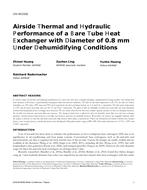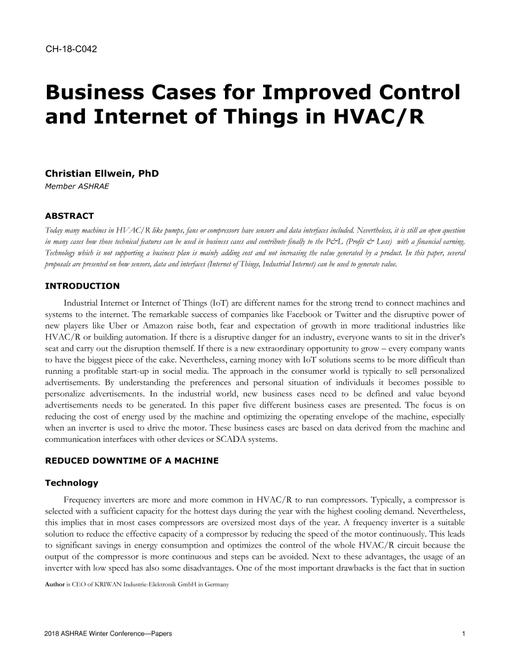-
-
Available Formats
- Options
- Availability
- Priced From ( in USD )
-
Available Formats
-
- Immediate download
- $16.00
- Add to Cart
Customers Who Bought This Also Bought
-

CH-18-C032 -- Airside Thermal and Hydraulic Performance o...
Priced From $16.00 -

CH-18-C042 -- Business Cases for Improved Control and Int...
Priced From $16.00 -

CH-18-C015 -- An Optimal Integrated Approach to Design an...
Priced From $16.00 -

CH-18-C062 -- Investigation of Low GWP Flammable Refriger...
Priced From $16.00
About This Item
Full Description
This paper investigates a modeling strategy, intended for model-based control, for an air-based thermal energy storage device used for peak-load shedding. The device, denominated an Electric Thermal Storage (ETS) heating system, is designed to "store" electric energy as heat during hours when energy costs are lower and demand charges are not incurred. It may be used in commercial, institutional or multi-unit residential buildings. The ETS core consists of high-density ceramic bricks that may be heated to very high temperatures (up to 900°C [1652°F]) via electric heating elements. ETS devices are available in two different models, which may be connected respectively to air- or water-based HVAC systems; this study focuses solely on air-based applications. ETS systems are particularly useful in regions where space heating is predominantly electricity-based, and where outdoor temperatures are very low; these conditions can result in high electric peaks due to high heating demand. The storage capacity of the commercial ETS devices ranges between 320 and 960 kWh [1,091,885 and 3,275,656 BTU/h], which is large enough to replace backup duct heaters (or water tank heaters) powered by fossil fuels, thus limiting harmful emissions while also reducing peak demand.
Although ETS devices have proven their usefulness to reduce peak loads, there are still some issues regarding their operation. Currently, ETS has basic control logic which involves knowledge of current power demand and outdoor temperature. This control logic can cause the system to store more energy than required during the shoulder season and thus increase the electricity bill at the same time. While previous research has addressed the development of detailed physics-based models for these types of ETS systems, this particular work aims to develop and compare simple (yet robust and generalized) control-oriented models for the ETS. The main purpose of these control-oriented models is the rapid simulation of the ETS device in order to assess load management strategies and help in decision-making. The investigated modeling approach is gray-box modeling (in which physical models are combined with measured data to complete the model). These control-oriented models are intended to be used, along with knowledge of future conditions (such as electricity pricing, occupancy, weather forecasts etc.), to plan ahead the operation strategies within the Building Automation System to better regulate electrical loads while maintaining comfort.





